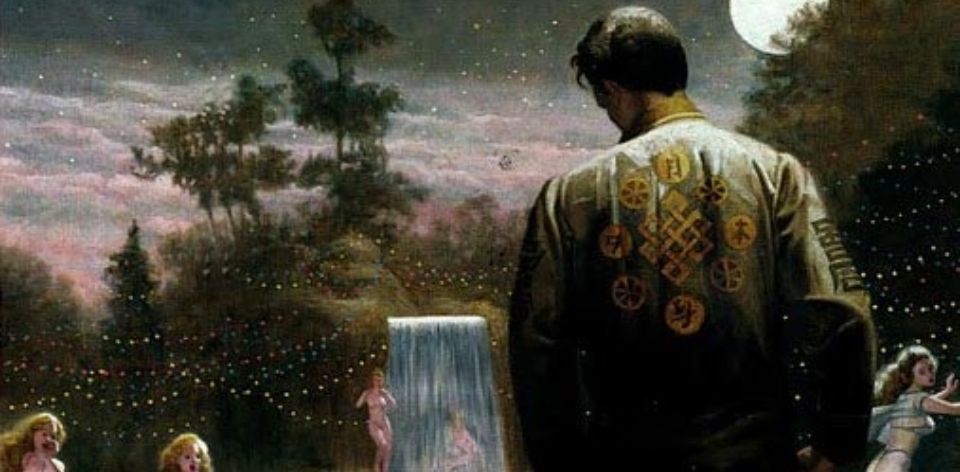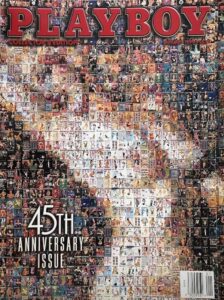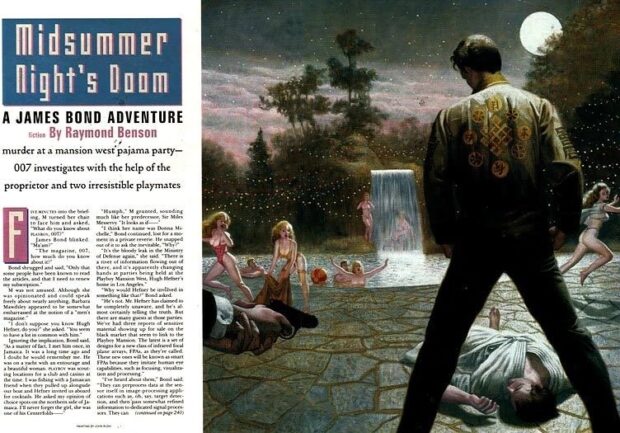Bond. James Bond. In the 007 Case Files, join me as I read all of the James Bond books, encompassing Ian Fleming and beyond. Fun fact: this is the 40th edition of the column! For Your Eyes Only: there’s spoilers ahead.
“What do you know about Playboy, 007?”
The second of Raymond Benson’s Bond short stories might allude to Shakespeare in the title, but its leanings are far baser than that. It’s a story where Bond meets another icon that arguable peaked in the 1960s, and has its tongue (amongst other things) firmly planted in cheek.
Like Blast from the Past, Benson’s first short story utilising James Bond, this story was originally published in Playboy. This one was timed for the 45th anniversary of the magazine in January 1999, the same year that The World Is Not Enough was released to cinemas. Unlike Benson’s previous short story, this one doesn’t delve into the rich history of Bond so much as it is an excuse for Bond to wander through an infamous party in the grotto.
The very loose plotting sees 007 on the trail of a leak in the Ministry Of Defense, one that has been tracked to the presence of a rock star named Martin Tuttle who regularly turns up at Hugh Hefner’s infamous parties. The setting for this shindig is the annual Midsummer Night’s Dream party, and the dress code is nightshirts, PJs or lingerie. But of course it is.
Electing to wear silk pyjamas from that limited menu, Bond turns up to a Playboy party with expected results. After all, this story was sandwiched between pages of 45 years worth of naked women – but I know you were there for articles – so a fair bit of cheekiness is to be expected. There’s some light spy craft, with Hef acting as Q for some reason.
Unlike the more substantive Benson novels, this short story is a little more intentionally throwaway in nature. That’s not just me saying that either, with the author does too. “That story was commissioned by Playboy strictly as a joke-piece,” said Benson in an excellent 2004 interview, one in which he gives excellent insight on his entire run of Bond books. “Mr. Hefner and I thought it would be a goof to have James Bond meet Hugh Hefner. That story is more of a celebration of Playboy than it is a Bond story and I hope fans look at it that way. It was a fun piece to write and it’s not to be taken seriously.”
Contextually, this messing about with cameos and the self-awareness was par for the course for Bond fans. After all, Bond’s screen counterpart during the Pierce Brosnan era had never quite shaken (or stirred) off the winking indulgences of the Roger Moore years. There’s an implied (and presumably non-canonical) backstory between Bond and Hef, and the suggestion that the Playboy founder has long been keeping tabs on our favourite spy. So, when you get lines like “Bond loved pyjamas, so he felt some kinship with his host in that respect,” you have to take them with some salty grains. For Playboy audiences, the whole thing ends with some forceful passion, as Bond “brought his mouth ruthlessly down on hers.” The 1990s seem so recent and yet so far away.
So, while both Playboy and James Bond have a strong history of short fiction, this is not the finest hour for either of them. Not was it intended to be. This is simply a case of pop eating itself and publishing the results between centrefolds.
James Bond will return…in A High Time to Kill.






